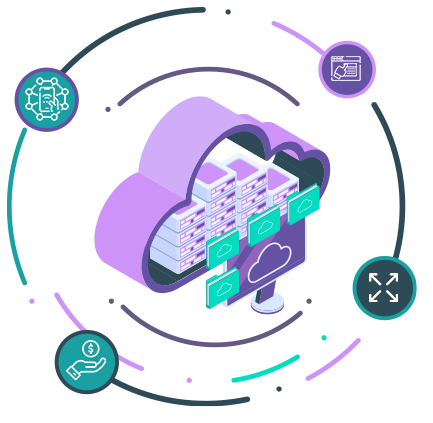The National Institute of Standards and Technology is an acronym for the NIST which is a non-regulatory government organization tasked with promoting economic competitiveness and driving innovation in the domains of science and technology.
As NIST develops standards for best practices, the government has advised businesses and organizations to adopt them. Compliance includes adhering to NIST requirements and ensuring that the company remains compliant over time, as the business’s vulnerabilities change and the cybersecurity landscape advances, this typically requires making modifications.
NIST compliance also improves an organization’s compliance with the Federal Information Security Management Act (FISMA), which supports information security in the context of the United States government.
Main objectives of NIST compliance
The NIST framework is extensive and would help any company or organization that has critical data to protect. The NIST cybersecurity framework addresses the need for standardized cybersecurity processes, rules, and regulations throughout the worldwide, particularly for critical systems. Main objectives of NIST compliance includes,
- Identifying, assessing, and managing risks which has an impact on essential infrastructure of companies and organizations.
- Creating a benchmark for evaluating the efficiency of cybersecurity measures that have been deployed.
- Developing security standards and recommendations that may be applied to all critical infrastructures.
- Providing advice to vital infrastructure sectors to help them use the modern technology and become more competitive in the industry.
Benefits of NIST compliance
NIST’s objective is to empower enterprises in keeping their data and information secure and safe, while also safeguarding critical infrastructure from both insider and external threats. Compliance with NIST standards may be mandatory for companies that work with the federal government. Furthermore, federal contractors aren’t the only ones who benefited from NIST compliance.
NIST compliance is important for improved data handling process. Controlled Unclassified Information is often used by entities that cooperate with the federal government. NIST has developed standards to keep this sort of confidential data safe from unauthorized access.
Following the NIST data security recommendations might provide you a competitive advantage over your competitors. When clients realize that a business has satisfied government requirements for handling and processing sensitive data, they may trust that firm with their information.
In addition, following the NIST guidelines increases organizational security against cyberattacks. It can also help to mitigate the effects of a data breach after an attack has happened.
Common standards of NIST compliance
NIST standards are in place to guarantee that cybersecurity measures are consistent across all federal government departments and enterprises. The meaning of NIST compliance differs according to various NIST publications. The most common standards of NIST compliance that can be applied are,
-
NIST CSF
This is used to assess cyber security risks. By following the guidelines with this publication, you may guarantee that your company’s systems, data, and networks, along with those of your clients, are protected against cyber-attacks. -
NIST 800-53
The NIST Special Publication 800-53 examines subcontractor compliance in the federal supply chain. Incident response, disaster recovery, access control, and business continuity are among the topics covered by this publication. -
NIST 800-171
Organizations and non-federal systems that handle unclassified information utilize this. To comply with NIST 800-171, your company must follow all of the security criteria outlined in the Defense Federal Acquisition Regulation Supplement.
NIST SP 800-53 compliance
NIST SP 800-53 is part of a set of recommendations published by the National Institute of Standards and Technology (NIST) to assist federal agencies in meeting the objectives of the Federal Information Security Modernization Act (FISMA). IT consists of a list of security rules that can be used to protect information systems against a variety of threats.
Also, it provides credible advice on how businesses should choose and maintain customized security and privacy measures for their information platforms. NIST SP 800-53 does not specify any security programs or software packages that must be installed, instead leaving that option to the choice of the particular agency. It’s a great road map for addressing all of the essentials for a solid data security strategy.
How to implement NIST 800-53 compliance
Organizations will need to implement the relevant NIST SP 800-53 controls determined as part of the risk assessment process and evidence compliance with these controls as part of the organization’s annual FISMA reporting requirements. The following guidelines are designed to assist companies in effectively implementing and maintaining NIST SP 800-53 controls.
-
Identify and classify sensitive data
Sensitive information can be dispersed across a range of systems and applications. It must be recognized, classified, and labeled in accordance with its value and sensitivity. For each security aim (confidentiality, integrity, and availability), grant each information category an impact value (low, moderate, or high) and classify it at the highest impact level. -
Understand and establish a strategy for improving your policies and
procedures
Based on the organization’s rules and procedures, successful implementation may differ. The organization can adjust some controls to satisfy specific privacy and security requirements. Controls should be selected depending on individual company requirements. The scope and severity of the selection process should be proportional to the risk being mitigated. Document the plan of improving policies and procedures. -
Provide ongoing employee training
All individuals should be educated on access control and cybersecurity best practices, including how to recognize and notify malware. -
Make compliance a continuous procedure.
When the system complies with NIST 800-53, it’s only a matter of keeping it up to date using third party products and improving it depending on system audits, updates in security standards, or an incident.








